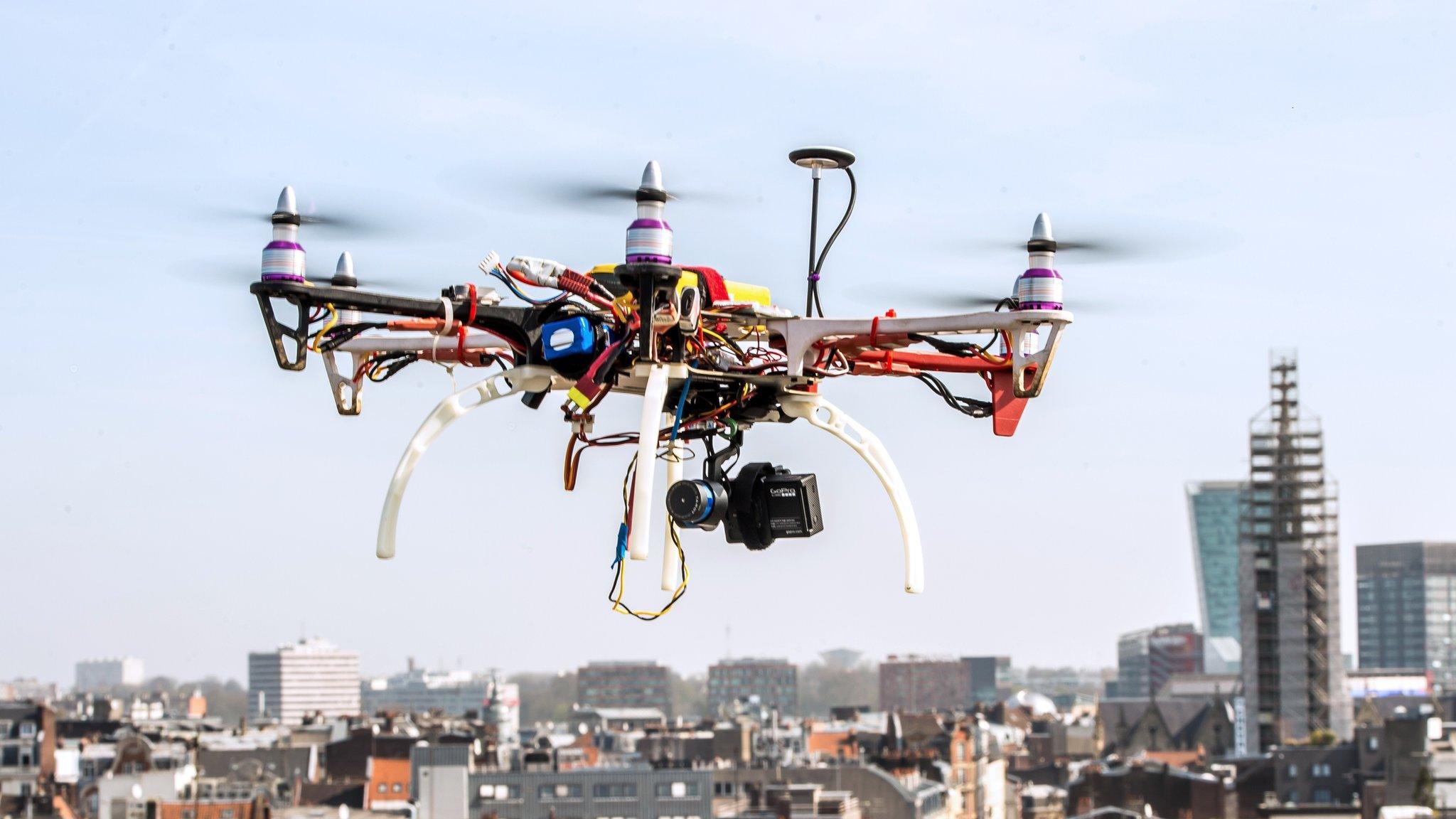Toddler's eyeball sliced in half by drone propeller
- Published
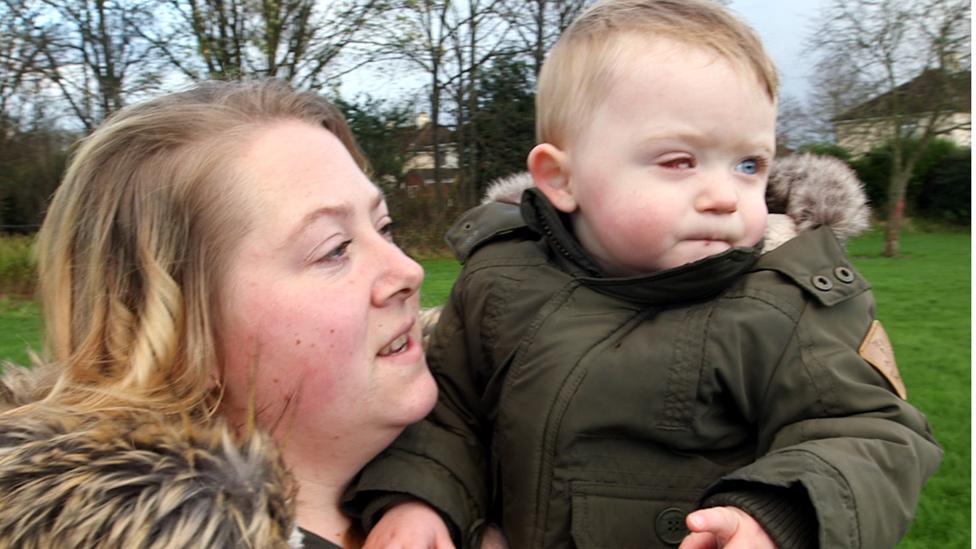
Amy Roberts said her son's injured eye was "the worst thing she had ever seen"
An 18-month-old boy has lost an eye after being hit by a drone flown by a family friend.
Oscar Webb's eye was sliced in half by a propeller after the operator, Simon Evans, lost control of the drone.
The toddler, from Stourport-on-Severn, Worcestershire, will need several operations before he can have a prosthetic eye fitted.
It was the first drone injury Oscar's surgeon had seen, but she said it was "inevitable" there would be many more.
Mr Evans said: "It was up for about 60 seconds. As I brought it back down to land it just clipped the tree and span round.
"The next thing I know I've just heard my friend shriek and say 'Oh God no' and I turned around and just saw blood and his baby on the floor crying."
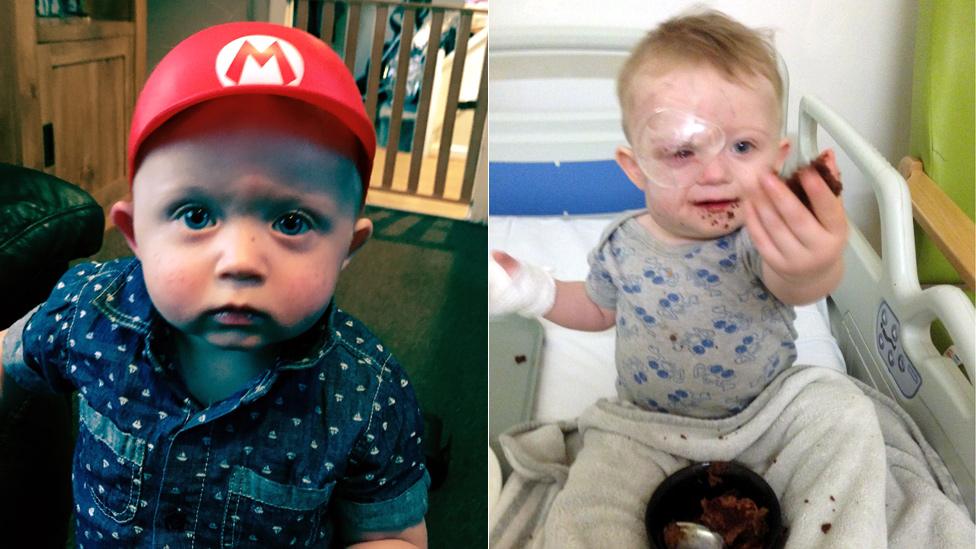
Oscar was 16 months old when he was injured
Oscar's mother, Amy Roberts, said she was in the ambulance taking Oscar to hospital in Birmingham when he opened his eye.
"What I saw, I can still see it now, and what I saw or what I thought I saw was the bottom half of his eye and it's the worst thing I've ever seen.
"I just hoped and prayed all the way there that what I saw wasn't true and wasn't real."
Before Oscar's accident seven weeks ago his family were unaware of the potential safety issues surrounding drones.
Faye Mellington, consultant in oculoplastics and orbital surgery at Sandwell and West Birmingham Hospitals NHS Trust, said she and her team "knew straight away the outlook for Oscar's vision long term was extremely poor".
The little boy can still see out of his uninjured eye.

Guidance for safe drone flying
Before each flight, check drone for damage and make sure all components are working in accordance with the user manual
The drone must be within the operator's sight at all times
The operator is responsible for avoiding collisions with other people or objects
The drone must not be flown in any way which could endanger people or property
It is illegal to fly drones over congested areas such as streets, towns or cities
Stay well clear of airports and airfields
Do not fly drones within 50m of a person, vehicle, building or structure, or overhead groups of people at any height
Source: Civil Aviation Authority

Miss Mellington said: "I have seen a lot of ocular injuries, but never in someone so young, and I've not seen one from a drone.
"That said, given their popularity and the common use, it's inevitable that we'll see a lot more."
The Civil Aviation Authority has released guidelines for flying drones safely, external, and there will be a public consultation before a government strategy is published in 2016.
The consultation, by the Department of Transport, will cover "the full range of issues relating to remotely piloted aircraft systems and drones and their use in UK airspace, including licensing and registration", said transport minister Robert Goodwill.
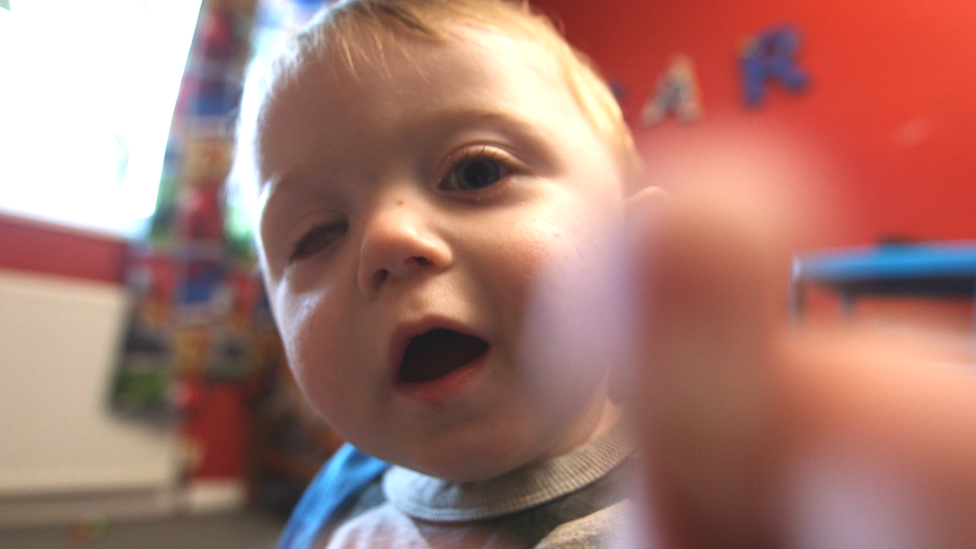
Oscar, who can see out of his uninjured eye, will need more surgery before a prosthetic can be fitted
Oscar's grandmother, Anita Roberts, who contacted the BBC consumer affairs programme BBC Watchdog after seeing a broadcast about the safety of drones, said she was shocked at the number of people who thought the gadgets "were just toys".
Mr Evans, who has been forgiven by Oscar's family who regard what happened as an "awful accident", said he had not used a drone since it happened: "I look at the drones in the garage and I feel physically sick."
Oscar's story can be seen on BBC Watchdog on Thursday at 19:30, BBC One.
- Published5 October 2015

- Published25 August 2015
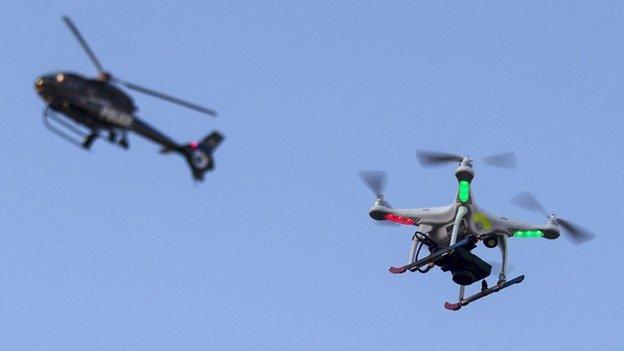
- Published22 July 2015
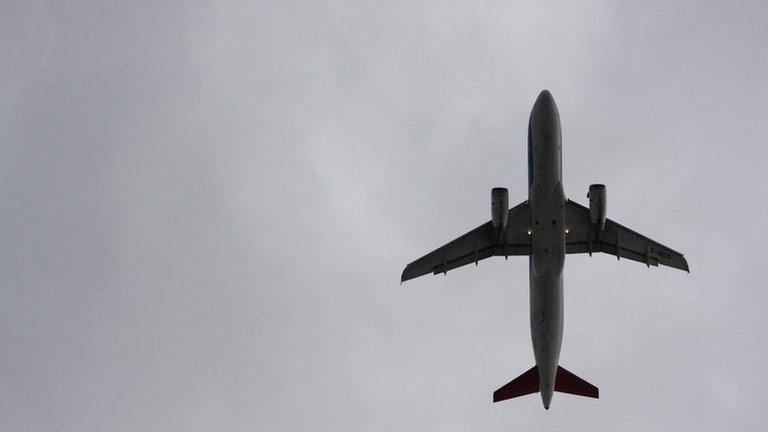
- Published1 July 2015
